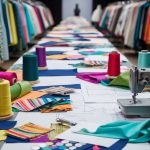Transforming Old Garments into Trendy Outfits: A Sustainable Guide
Building a Sustainable Wardrobe
Building a sustainable wardrobe involves selecting garments that are both eco-friendly and versatile. By focusing on timeless and interchangeable pieces, individuals can create an adaptable and stylish collection that minimizes waste.
Curating Timeless Pieces
Curating timeless pieces means focusing on clothing that transcends fleeting trends. Opting for classic designs and quality materials ensures garments remain wearable for years. Neutral colors like black, white, gray, and beige provide a versatile foundation that complements various styles.
These base colors can be paired with brighter accents, creating diverse looks without the need for frequent purchases. Supporting brands that advocate for slow fashion and prioritize eco-friendly materials reinforces the commitment to sustainable style.
The Capsule Wardrobe Concept
The capsule wardrobe concept involves selecting a limited number of interchangeable pieces to maximize outfit possibilities. By choosing essential items like tops, bottoms, and outerwear in complementary colors, individuals can create an array of looks from a few key articles of clothing. Neutral tones are particularly effective in this setup, offering flexibility and coherence.
This method not only simplifies morning routines but also promotes mindful consumption, reducing the environmental impact typically associated with fast fashion. Embracing a capsule wardrobe encourages thoughtful consideration in each purchase, steering away from impulse buying and towards meaningful acquisitions.
Personal Style and Conscientious Fashion
Combining personal style with eco-friendly fashion requires a careful consideration of ethical choices and conscious consumption. Individuals can define their unique fashion statements while minimizing their environmental impact.
Defining Your Eco-Friendly Fashion Statement
An eco-friendly fashion statement balances personal style with environmental responsibility. This approach involves selecting garments made from sustainable materials, such as recycled fabrics or organic cotton. It also encourages choosing quality over quantity to ensure each piece remains a lasting part of the wardrobe.
To identify an individual’s unique style in this context, one might explore thrift shops, vintage stores, or eco-conscious fashion brands. These options provide diverse styles while supporting sustainable practices. Opting for timeless designs can facilitate lasting appeal beyond seasonal trends. Prioritizing ethical brands further aligns fashion choices with values of conscious consumption.



